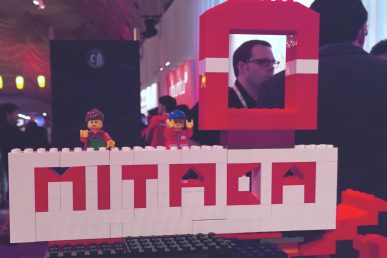Carol Barrett, currently a data center software planner at Intel Corporation, has broad software development experience ranging from weapon control systems on submarines to web-based kids games to data center applications.
You’ll often find her at OpenStack Summits or Mid-Cycles – both as a speaker and participant – usually about to go in to or just come out of a meeting.
Barrett reckons that she puts in about 15 hours a week in OpenStack community work; here are some of her tips for staying on point when leading or following meetings — and what to do when other members don’t deliver.
What’s your role in the OpenStack community?
My primary role in the community is connecting enterprise users of OpenStack with the OpenStack design and development activities.
I work to achieve this through the Enterprise Work Group (identify enterprise requirements and barriers to OpenStack adoption) and the Product Work Group (establishing a planning, tracking and roadmap capability within the community).
Beyond this, I support the development of the OpenStack community – forward-looking, diverse and thriving.
Looking at your involvement – that’s a lot of meetings. What makes a meeting successful?
You ain’t kidding!! In a typical week I have ~15 hrs of OpenStack community or Work Group meetings. Making sure those hours are valuable to me and the community is a top priority!
For meetings that I lead, I put time into making them productive.
That includes:
- Wiki and OpenStack IRC Meeting Repo: As needed, update the info on both of these to make sure people get accurate info on meeting times and agendas
- Calendar invites: I send calendar invites to attendees. I think this is the biggest factor in helping people to prepare and attend.
- Pre-meeting emails: A day or two ahead of the meeting, I send out an email on the mailing list with the meeting logistics and agenda.
- Agenda planning: I keep a 3-4 week rolling agenda for meetings. This allows me to make changes based upon people’s availability or change in priority for a topic. And always have time for opens!
- During the actual meeting, my goal is to make sure we cover the high priority agenda items, fostering good discussion and make sure everyone is included.
When I attend a meeting that someone else is leading, I try to come prepared and participate where I can add value. IRC meetings can be a challenge – both following the conversation and participating.
Still working on ways to make these more productive for me. If other people have tips or tricks to share, I’d love to hear them!
What are you working on now heading to the Austin Summit?
Right now it’s all about developing content, planning for working group sessions, and identifying the design sessions to attend.
There are always many debates in the OpenStack community – which one is the most important, now?
So much to chose from 🙂
Seriously though, I actually think the most important topic for our community is one that we’re not talking about: What’s the vision for the future of OpenStack? And how we are going to achieve it?
Why is it important for women to get involved with OpenStack?
By bringing together people with different backgrounds, talents, knowledge and experiences we create a strong foundation for creating innovative solutions.
Today the percentage of women in our OpenStack community is significantly less than the percentage of women in the technology industry. There’s probably multiple reasons for this, some of which may be unique to women (like creating awareness with women developers of the community) and others which are not. We’ve been told that getting up to speed on the community tools, processes and forums take some time and help to learn. There’s work underway in the community and Foundation to make this easier and the Women of OpenStack are hosting a session at the Austin Summit to help folks ramp up on these things too.
What obstacles do women face when getting involved in the OpenStack community?
Other than the tools, processes, etc – I think the challenges that women face in the OpenStack community are pretty much the same ones we face in the technology industry.
It’s generally led by men and because of the difference in our communication and interaction styles that doesn’t always make women feel welcome.
I think women who might not view themselves as experts get intimidated and tend to hang back or be quiet in team meetings, instead of asking for info and help from the experts in the meeting. Of course, we’re not likely the only ones with questions, but it’s still a challenge to ask it.
Personally, it took me a month or so of following IRC meetings until I felt comfortable making my first comment. The community can be a bit harsh if you don’t follow their protocols…so I wanted to make sure I put my best foot forward.
How can someone who is already involved in the community take it to the next level?
It’s easy! Where you see a need, take on ownership for actions to address it. Take the initiative to start an email discussion, set up the first meeting, draft the goals, etc. – get the ball rolling!
Our community is collaborative and will partner with you on exploring the area and figuring out what makes sense (or not). And if you need someone with a specific area of knowledge or expertise, ask around on mailing lists, on IRC Channels, in your other community meetings. There’s always a resource out there.
I’m happy to chat with anyone who is looking for help in becoming a leader in our community!
What are the benefits/pitfalls of teaming up with other people?
I’m the youngest of six children, I grew up learning to work with people! 🙂
I tend to approach teaming up with people for business in the same way I do in my personal life. It’s about creating a relationship, finding the common interests, figuring out how you do things together and taking actions.
Harnessing the collective expertise and energy of team will allow you to know more and do more than you ever expect. There are so many smart, capable people who want to contribute. There’s nothing like working with a team that has found their rhythm, things seem effortless…and fun!
The challenge comes when people don’t contribute or make their deliverables. There can be legitimate reasons for this, but it’s a problem for the team. If you’re the leader, you should reach out to that person and discuss your viewpoint and see how you can work together to improve the situation. You may find yourself facing the tough decision of allowing someone to “audit” the team, but not be an active participant. There’s nothing more satisfying than figuring out how to positively resolve issues in the team.
This post is part of the Women of OpenStack series spotlighting the women in various roles in our community who help make OpenStack successful. With each post, we learn more about each woman’s involvement in the community and how they see the future of OpenStack taking shape. If you’re interested in being featured, please email [email protected].
Cover Photo // CC BY NC
- OpenStack Homebrew Club: Meet the sausage cloud - July 31, 2019
- Building a virtuous circle with open infrastructure: Inclusive, global, adaptable - July 30, 2019
- Using Istio’s Mixer for network request caching: What’s next - July 22, 2019

)










